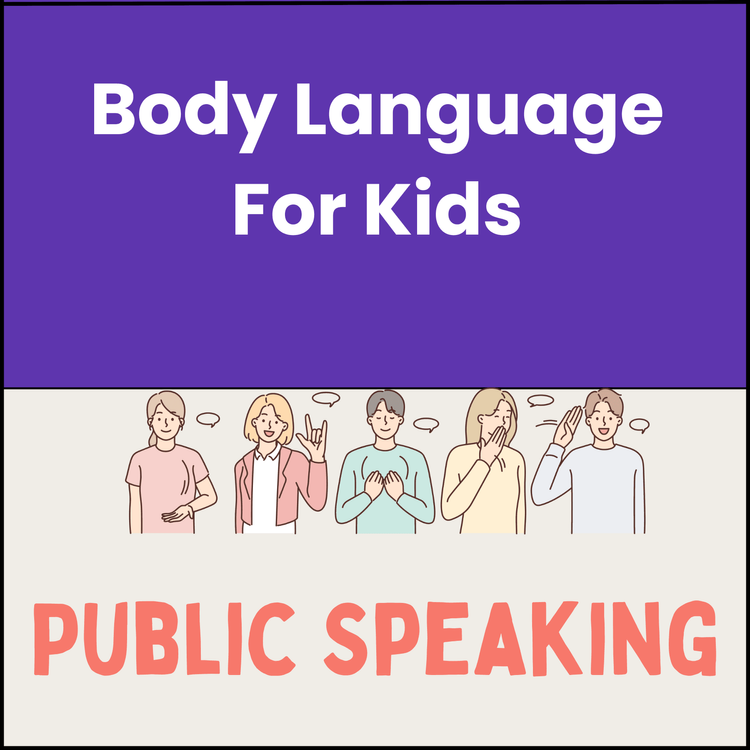Assertive Communication: Meaning, Examples & How to Master It

Table of Contents
- What Is Assertive Communication?
- Characteristics of Assertive Communication
- Examples of Assertive Communication
- How to Develop Assertive Communication Skills
- Common Barriers to Assertive Communication
- Benefits of Practicing Assertive Communication Regularly
- Assertive Communication for Kids and Teens
- Assertive Communication in the Digital Age
- Real-Life Examples of Assertive Communicators
- PlanetSpark’s Role in Building Assertive Communicators
- Conclusion
- Frequently Asked Questions
In today’s fast-paced world, effective communication is more important than ever. Whether it’s expressing your ideas in a team meeting, asking for help in class, or resolving conflicts with friends, the ability to communicate assertively can make all the difference.
Assertive communication is not about being aggressive or dominating others. It’s about expressing your thoughts, feelings, and needs confidently and respectfully while also listening to others. This balance of confidence and empathy is what makes assertive communicators so effective.
Let’s explore what assertive communication really means, why it’s essential, and how you can develop this powerful skill.
What Is Assertive Communication?
Assertive communication is a communication style in which a person expresses their opinions, feelings, and needs directly, honestly, and respectfully. It helps you stand up for yourself while maintaining positive relationships with others.
It’s one of the four main communication styles:
Passive communication – Avoiding expressing thoughts or needs; often leads to frustration.
Aggressive communication – Expressing needs forcefully, often at the expense of others.
Passive-aggressive communication – Indirectly expressing anger or resentment.
Assertive communication – Communicating clearly, confidently, and respectfully.
Example:
Passive: “It’s fine, I’ll do all the work myself.”
Aggressive: “You never help! I’m tired of doing everything!”
Assertive: “I’d appreciate it if we could divide the work equally so we can both contribute.”
Assertive communication is the healthy middle ground that encourages understanding and cooperation.

Characteristics of Assertive Communication
Assertive communication is not just about what you say it’s also about how you say it. Assertive communicators display a set of core traits that reflect balance, confidence, and emotional intelligence. These characteristics make them trustworthy, effective, and respected in any setting be it school, work, or personal life.
Let’s explore these traits in detail:
1. Clarity and Honesty
Assertive communicators express their ideas clearly and truthfully. They don’t hide behind vague statements or excessive politeness; instead, they communicate their needs and opinions in a way that is easy to understand. They avoid beating around the bush and get straight to the point, ensuring that their message is received exactly as intended. However, they also ensure their honesty does not come across as harsh or insensitive.
For example:
Instead of saying, “Maybe I’ll think about it,” an assertive communicator says, “I appreciate your offer, but I’m not available right now.”
2. Respect for Others
One of the most important traits of assertive communication is mutual respect. Assertive individuals understand that communication is a two-way processthey listen carefully, allow others to express their viewpoints, and respond thoughtfully. They don’t interrupt, talk over others, or dismiss opposing opinions. Even when they disagree, they maintain politeness and empathy.
For instance:
“I understand your perspective, but I see it differently because…”
3. Confidence
Confidence is the hallmark of assertive communication. Assertive people believe in their thoughts and ideas and express them without fear or hesitation. They speak with a steady, calm tone and maintain appropriate body language standing tall, keeping eye contact, and using gestures naturally.
Their confidence doesn’t translate into arrogance; it’s rooted in self-assurance and self-respect. Confident communicators also encourage others to express themselves freely, creating an open, empowering environment. They use positive words, balanced tone, and strong but calm delivery all signs of genuine confidence.
4. Emotional Control
Emotional control separates assertive communication from aggressive or passive styles. Assertive communicators know how to manage their emotions, especially in tense or conflicting situations. They don’t let anger, frustration, or anxiety dictate their response. Instead, they take a moment to process their feelings and express them constructively.
For example:
“I’m feeling upset about what happened earlier, and I’d like to discuss it so we can avoid it in the future.”
5. Accountability
Assertive communicators take full responsibility for their words, emotions, and actions. They don’t shift blame or make excuses. Instead, they own up to mistakes and focus on finding solutions.
They use “I” statements like:
“I made an error in judgment.”
“I should have communicated more clearly.”
By accepting responsibility, they model integrity and reliability qualities that earn respect and trust from peers and colleagues alike.
Accountability also means respecting others’ boundaries and expectations. Assertive communicators know when to apologize, when to stand firm, and when to compromise always balancing honesty with humility.
6. Balanced Body Language and Tone
Beyond words, assertive communication relies on nonverbal cues posture, gestures, facial expressions, and tone of voice. Assertive individuals maintain relaxed but confident body language. They make eye contact without staring, smile when appropriate, and use a friendly yet firm tone.
Their voice conveys calm assurance rather than dominance or submission. This harmony between verbal and nonverbal communication strengthens their message and helps others feel comfortable and respected.
7. Empathy and Understanding
True assertiveness isn’t just about expressing yourself it’s also about understanding others. Empathy helps assertive communicators see things from another person’s perspective, respond thoughtfully, and resolve conflicts peacefully.
They acknowledge others’ emotions without compromising their own needs.
For example:
I see that this situation has been stressful for you. Here’s what I suggest we do next.
Build your confidence and voice your thoughts fearlessly with PlanetSpark’s Communication Skills Program.
Join a free trial class today!
Examples of Assertive Communication
Let’s look at a few examples in daily life where assertiveness shines:
At School: “I need more time to complete the project. Can I have an extra day to ensure it’s done well?”
At Work: “I’m happy to help with this task, but I need to adjust my current schedule to accommodate it.”
With Friends: “I’d rather not go out tonight. I need some time to rest, but let’s plan something for the weekend.”
At Home: “I appreciate your concern, but I’d like to make this decision on my own.”
Each statement is clear, polite, and confident without being disrespectful.
How to Develop Assertive Communication Skills
1. Know Your Rights and Boundaries
Assertiveness begins with self-respect and understanding that your opinions, feelings, and needs are just as important as anyone else’s. When you recognize your rights and set clear boundaries, you communicate with confidence and clarity. For example, saying, “I’m happy to help tomorrow, but I need to rest tonight,” shows that you respect both your needs and others’ expectations. Knowing your limits prevents burnout, encourages healthy interactions, and forms the foundation for assertive communication.
2. Use “I” Statements
Using “I” statements allows you to express your thoughts and feelings without blaming or criticizing others, which reduces defensiveness and fosters understanding. For instance, instead of saying, “You never listen to me,” an assertive communicator would say, “I feel unheard when I’m interrupted during meetings.” This structure focuses on your perspective—I feel… when… because… I would like…which promotes clear, honest, and respectful dialogue while maintaining positive relationships.
3. Maintain Positive Body Language
Assertive communication is not just about words; your body language reinforces your message. Standing tall, maintaining relaxed eye contact, and using open gestures show confidence, while a calm and steady tone conveys authority without aggression. Positive body language helps others perceive your message as genuine and respectful, creating trust and making your communication more impactful, whether in classrooms, workplaces, or social settings.
4. Learn to Say No
Saying “no” respectfully is a vital assertive skill that demonstrates self-confidence and clear boundaries. You don’t have to feel guilty when declining requests; instead, you can respond politely, for example, “I appreciate your offer, but I’m unable to commit right now.” Learning to say no ensures you protect your time, energy, and priorities, preventing stress and resentment while maintaining healthy and respectful relationships.
5. Manage Emotions
Assertive communicators maintain emotional control even in challenging or stressful situations. By staying calm, practicing deep breathing, pausing before responding, or focusing on facts rather than emotions, you can communicate effectively without reacting impulsively. For example, instead of shouting, “That’s unfair!” you could calmly say, “I understand your point, but I’d like to share my perspective.” Emotional regulation ensures clarity, prevents conflict escalation, and shows maturity and composure.
6. Listen Actively
Being assertive isn’t only about expressing your thoughts; it also involves active listening. Paying full attention, summarizing what the other person says, asking clarifying questions, and showing empathy demonstrate that you respect others’ perspectives. For instance, saying, “I see what you mean about the workload. I agree it’s been heavy lately maybe we can divide it more evenly,” validates the other person while asserting your own ideas, creating balanced and productive communication.
7. Practice Regularly
Assertiveness is a skill that improves with consistent practice, starting in low-pressure situations like sharing preferences at a restaurant, expressing opinions in class, or politely declining small tasks. Role-playing scenarios with friends, family, or mentors helps refine your tone, body language, and word choice. Over time, repeated practice makes assertive communication natural, enabling you to handle challenging conversations, negotiations, or conflicts confidently and respectfully.
Turn your thoughts into powerful words! Enroll in PlanetSpark’s Communication Skills Classes and start your assertive journey today.
Start with a free trial!
Common Barriers to Assertive Communication
Even though assertiveness is ideal, many people struggle with it due to:
- Fear of Rejection: Worrying about others’ opinions can stop you from speaking up.
- Lack of Confidence: Self-doubt can make you choose silence or passive behavior.
- Cultural or Social Conditioning: Some people are taught to prioritize harmony over honesty, leading to suppressed communication.
- Misunderstanding Assertiveness as Aggression: People often fear sounding rude, even when they’re simply being direct.
- Emotional Overload: Strong emotions like anger or guilt can cloud judgment and lead to aggressive or passive reactions.
Benefits of Practicing Assertive Communication Regularly
Boosts self-esteem and confidence
Builds respectful relationships
Reduces stress and anxiety
Promotes effective leadership
Encourages emotional maturity
In essence, assertiveness creates a positive communication culture whether at school, home, or work.
Assertive Communication for Kids and Teens
Learning assertive communication at a young age helps children grow into confident, empathetic adults. At PlanetSpark, we nurture these qualities through:
Public speaking sessions
Role-play exercises
Real-world communication challenges
Confidence-building games
When children learn to express themselves assertively, they not only succeed academically but also develop strong emotional intelligence.
Assertive Communication in the Digital Age
In an era dominated by social media and digital interactions, assertive communication is more crucial than ever. Online communication often lacks tone and body language, leading to misunderstandings.
To be assertive online:
Choose words carefully and avoid emotional reactions.
Respect differing opinions.
Respond thoughtfully rather than impulsively.
Set boundaries for your digital presence.
Assertiveness ensures you express yourself authentically while maintaining digital decorum.
Real-Life Examples of Assertive Communicators
Malala Yousafzai – Advocates for girls’ education assertively, with respect and courage.
Mahatma Gandhi – Demonstrated assertive communication through non-violent advocacy.
Oprah Winfrey – Uses assertive communication to empower discussions and inspire others.
These leaders show that assertiveness isn’t loud it’s impactful.
PlanetSpark’s Role in Building Assertive Communicators
PlanetSpark is revolutionizing how kids and teens learn to communicate. Through live, interactive learning experiences, we equip learners with assertive communication techniques that build lifelong confidence.
How PlanetSpark Helps:
Real-life Speaking Scenarios: Students practice assertive dialogue through everyday situations.
Feedback-Based Growth: Coaches provide constructive input to refine tone and clarity.
Global Classrooms: Exposure to peers from different cultures fosters open-mindedness.
Confidence Boost Modules: Students overcome hesitation and learn to express ideas boldly.

Conclusion
Assertive communication is the bridge between silence and aggression it’s where confidence meets respect. It allows you to express who you are, what you believe, and what you need, without undermining others.
Whether you’re a student, professional, or parent, assertiveness helps you connect, influence, and grow. It’s not about being perfect it’s about being authentic, confident, and kind.
Frequently Asked Questions
1. What is assertive communication?
Assertive communication is expressing your thoughts, feelings, and needs clearly and respectfully. It balances confidence with empathy to maintain positive relationships.
2. How is assertive communication different from aggressive communication?
Aggressive communication imposes your views without regard for others, while assertiveness expresses yourself respectfully. Assertive communicators value both their own and others’ opinions.
3. Why is assertive communication important for kids and teens?
It builds confidence, emotional intelligence, and social skills. Learning assertiveness early helps children express themselves clearly and handle conflicts effectively.
4. How can I practice assertive communication daily?
Start with small steps like using “I” statements, saying no politely, and maintaining positive body language. Regular practice makes assertiveness natural over time.
5. Can assertiveness be learned by anyone?
Yes, assertiveness is a skill that develops with awareness, practice, and feedback. Guided programs like PlanetSpark’s communication classes can accelerate this learning.
Download Free Worksheets
Personalized Communication Report
Record a video to get a AI generated personalized communication report for your child

Hi There, want to try these
tips for your child with
LIVE with our expert coach?
Let's check your child's
English fluency

